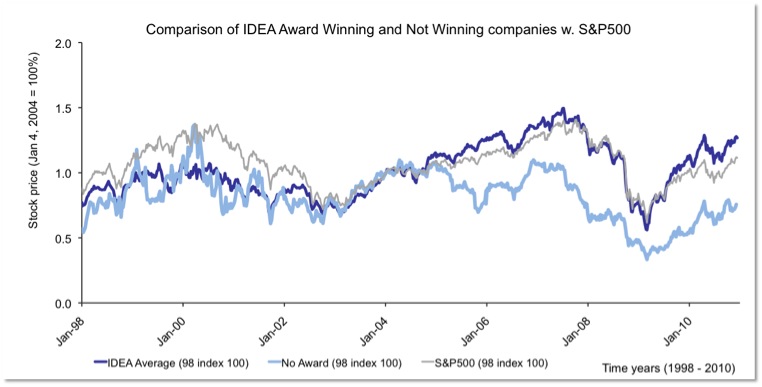New products must be ten times better than existing products for consumers to switch and the failure rate connected to new product introductions is 35 to 40 percent. So, how a product is designed is the key to its success and is twice as influential as the branding of that product.
Apple's design success may have converted even the staunchest design skeptic into believing in design by now, but how does one really know if one's design is good enough? Is design quality subjective or objective? To quantify design, one needs to define objective metrics, such as the generally accepted criteria behind the IDEA Award that is given out for design quality excellence each year by the Industrial Designers Society of America.
As part of my Ph.D. thesis at Stanford Center for Design Research, I audited over one hundred industrial design awards worldwide. Do designers usually agree on the design quality of products? Yes -- but only if the judging criteria is made explicit, such as using Design Quality Criteria from the Industrial Design Excellence Award.
This suggests that design is objective to a high degree when focusing on the design quality criteria derived from global design awards. By having designers who are uninvolved in the product development project independently rate products along these six Design Quality Criteria, management would then have a reliable indicator of a product's performance before production.
Now that design professionals can agree on criteria expressed in global design awards, could it be possible that these awards might be used to predict a design's performance? Studies show that design award reception is a lead indicator for stock performance and that companies consistently winning awards outperform their non-winning peers by four percent annually. These studies reflect the organization's ability to integrate design on a performance, context and strategic level and show that if one systematically plans for this integration of design, substantial value can be created.

Over the period 2002 - 2011 IDEA Award-winning companies outperform non-award recipient and S&P 500 by four percent annually
Since five to seven percent of development resources are spent in the conceptual phase (where 70 percent of a product's cost is determined, focusing one's effort up front offers the greatest leverage of design) including the Design Quantification Criteria in the design brief and tailoring them to the products indented levels of innovation, such as incremental and breakthrough, provide designers the right balance of information from the beginning. After including the DQC, we found that briefs for incrementally innovative products required a comparatively large focus on Expression and Performance criteria, while briefs for breakthrough innovative products needed a comparatively large focus on Context.
Better design metrics and decision-making in the product selection process could significantly reduce new product development failure rates. In addition, including design considerations before marketing investments are made would qualify as a game changer. To quote the famous football coach Vince Lombardi: "If you are not keeping score, you are only practicing."